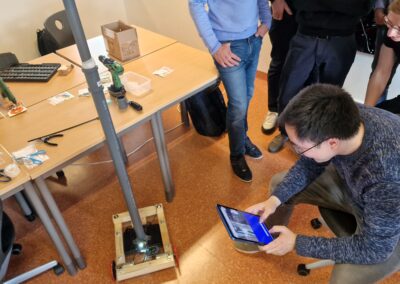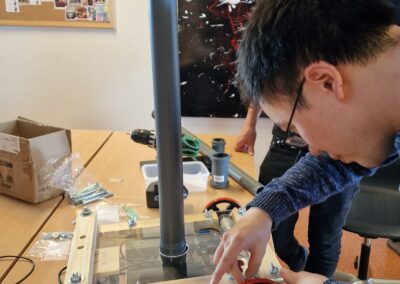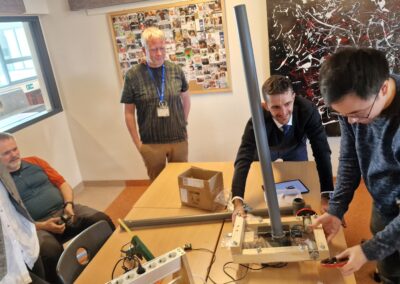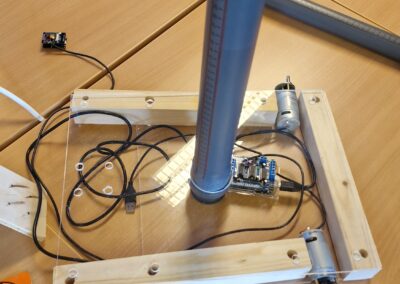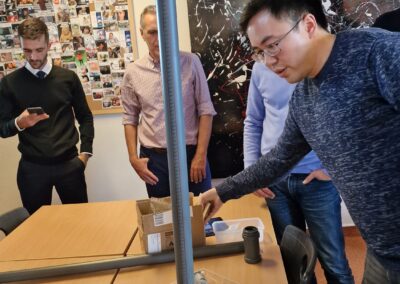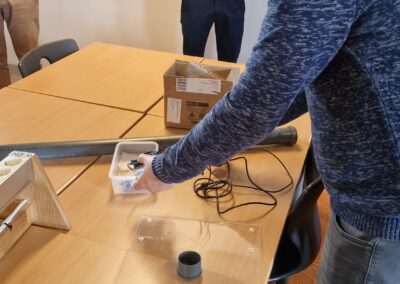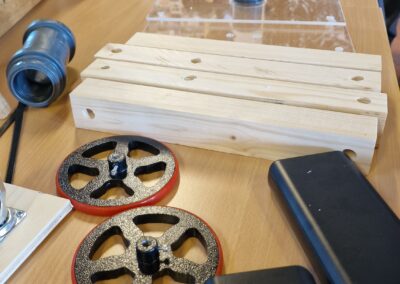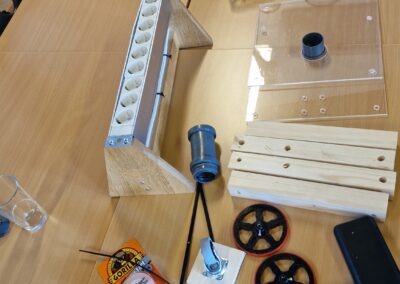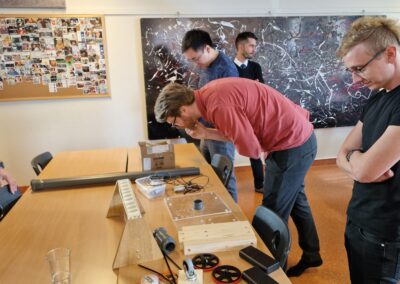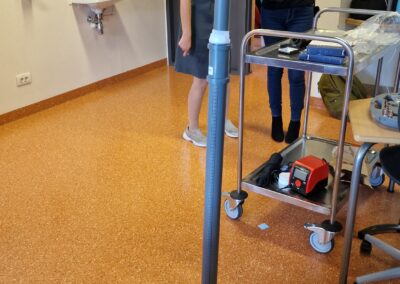TRinE Guide: Building Your Own Telepresence Robot
Telepresence robots are becoming increasingly popular due to their ability to allow people to be “present” in a remote location without physically being there. However, these robots can often be expensive and difficult to obtain. That’s where the “Do It Yourself” (DIY) kit for telepresence robots developed during the TRinE project comes in.
The DIY kit is a set of instructions and materials that can be used to create a telepresence robot at home. The kit was developed by a mixed team of experts in the field of robotics and virtual reality and students of the Karlsruhe Institute of Technology (KIT). First ideas, concepts and prototypes were developed by the students in the Virtual Engineering practical course, held at the Institute for Information Management in Engineering at KIT.
The guidelines are presented in a comprehensive document, which begins with an introduction to the concept of telepresence robots, explaining what they are and how they work. It then goes on to provide a list of required materials and tools, as well as detailed instructions on how to assemble the robot.
One of the key benefits of the DIY kit is its affordability. By following the instructions in the guide, users can save a significant amount of money compared to purchasing a pre-built telepresence robot.
The DIY kit also offers a great opportunity for learning and experimentation. Users can gain valuable experience in robotics and programming while building their own telepresence robot.
While the current version of the DIY telepresence robot kit provides a good starting point for building your own robot, there are still many possibilities for future development and improvements. For instance, one could explore ways to improve the robot’s stability and maneuverability or add additional features, such as sensors for navigation or object recognition. The graphical user interface could also be optimized and made more suitable for the specific target group. Additionally, the kit could be adapted for different use cases, such as remote inspections in industrial settings.
Overall, the DIY kit for telepresence robots offers a cost-effective and educational way for individuals and organizations to create their own robots. With the detailed guidelines provided in the document, anyone can follow along and create their own telepresence robot from scratch.
The guideline document can be found under this Google Doc link.
Link to the GitHub Repository: https://github.com/Victor-Haefner/telerobi/
You want to learn more? Browse through our TRinE Teaching Scenarios and TRinE Stories and get more ideas on how a TR can be used in specific situations.

